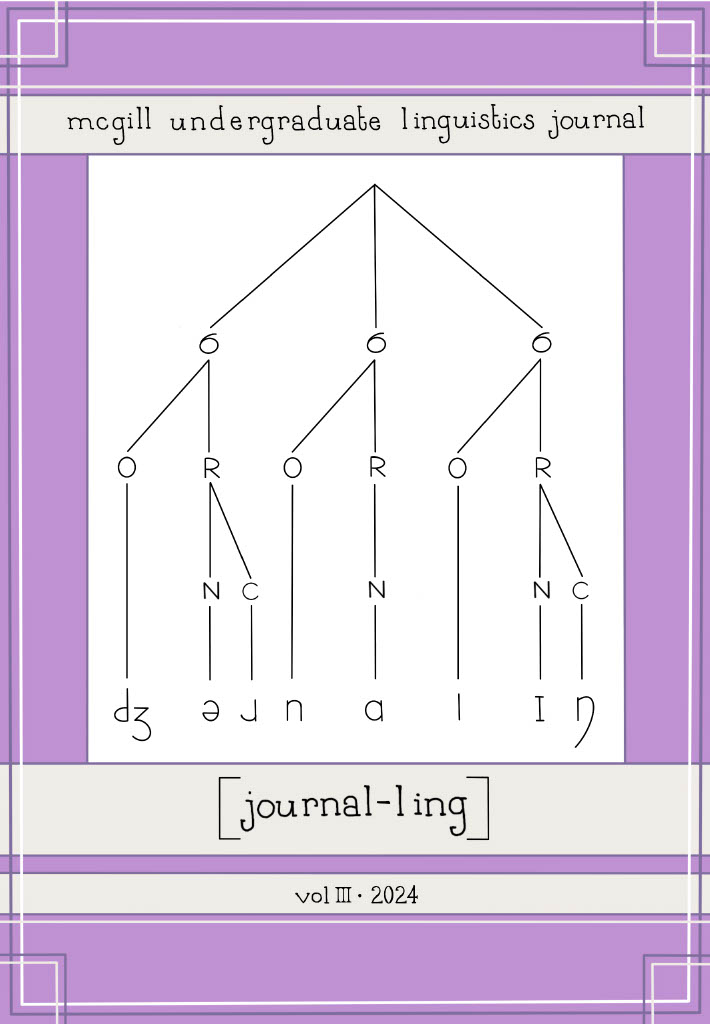Published 2024-12-31
Copyright (c) 2024 Simone Brown

This work is licensed under a Creative Commons Attribution-NoDerivatives 4.0 International License.
Abstract
VOT (Voice Onset Time) is a measurement used to understand a language’s phonetic profile, i.e. the unique production of phonemes within a language. This paper will examine two languages in the NaDene language family of North America— Navajo and Tlingit— and measure the VOT of stop production in the continuous speech of native speakers. Both languages are unique for their three-way stop contrast between plain voiceless, aspirated voiceless, and ejective stops. Included is a discussion of the various considerations accompanying Indigenous language research, including orthographic variation, transcription bias, and dialectal and idiolectal variation. The VOT measurements show a distinct contrast between stop categories (plain voiceless, aspirated voiceless and ejectives), but evidence suggests there is a range rather than a specific length that speakers target in their production. Both languages demonstrate a preference for plain stops and include several unmeasurable ‘unreleased stops.’ Tlingit demonstrates a wider range and more accurate VOT targeting than Navajo, while Navajo has significantly longer VOTs, suggesting separate repairing mechanisms in the two languages to manage perception difficulties. The phonological and perceptive processes of ejectives are also discussed, particularly the ejective and nonejective contrast. Suggestions for further research are provided.

